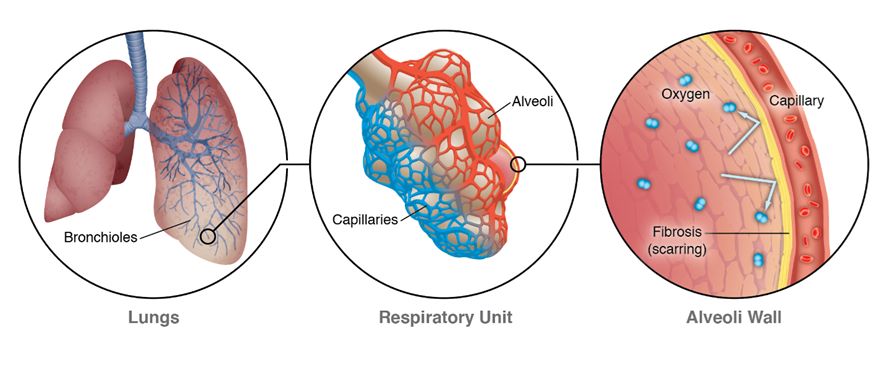
This is a rare disorder characterized by an inflammation and subsequently a scarring and fibrosis affecting the interstitium or scaffolding of the lungs. Several different disease proccesses can result in lung fibrosis. There are known causes like certain drugs, radiation, some occupations, exposure to pigeon droppings and hence a careful history of occupational and environmental exposures is essential. Usually no cause is obvious and the ILD is then labelled Idiopathic Interstitial Pneumonia. There are two main types: Idiopathic Pulmonary Fibrosis (IPF) which has a worse prognosis and Non Specific Interstitial Pneumonia (NSIP) which carries a better prognosis.

A good quality CT scan of the chest (HRCT) is crucial in determining the type of ILD. PFT and TLCO tests give an idea of the extent of fibrosis and the disability it has produced. A six minute walk test is also a good way of assessing the patients functional status and is of prognostic value. A bronchoscopy and trans-bronchial biopsy and, on occasion, an open lung biopsy may be needed to establish the type of ILD
Currently treatment involves a low dose of steroids, azathioprine and N Acetyl Cystine. No drug or combination of drugs can reverse the disease but the aim of treatment is to arrest its progression. Many patients will eventually need oxygen at home and patients should be assessed for this. Pulmonary rehabilitation can also be offered and we are currently assessing the efficacy of rehab. Lung transplantation is a last resort option in selected patients with advanced fibrosis and at the Hinduja hospital we are in the process of setting up a transplant programme